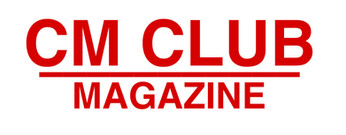The Dark Side of Disposable Coffee Cups
- CM CLUB MAGAZINE

- Apr 29
- 2 min read

In the past, many coffee shops served drinks in reusable ceramic or glass cups, which were more eco-friendly and didn’t pose health risks. Today, most cafes use disposable paper cups for convenience, but these often contain a thin plastic lining to prevent leaks, making them difficult to recycle.
A study published in Environmental Pollution found that the plastic linings of paper cups can release microplastics into hot beverages within minutes.
Worse, when hot liquid is poured into these cups, chemicals like polyethylene and microplastics can leach into the drink, raising health concerns. Studies suggest that long-term exposure to these toxins may disrupt hormones or even increase cancer risks.
Research from the University of Gothenburg revealed that chemicals leached from discarded paper cups can be as harmful to aquatic organisms as those from plastic cups. This challenges the notion that paper cups are a safer environmental choice.
Coffee Cups Toxic Elements
That steaming cup of coffee or tea might come with an unwelcome side of chemicals. When hot liquid meets plastic lids—two concerning things can happen:
Warping & Melting – High temperatures can distort lids, causing leaks (messy) or even burns (painful).
Chemical Leaching – Some plastics release toxins like BPA and phthalates when heated, potentially contaminating your drink.
Disposable coffee cups can release microplastics when exposed to hot liquids. A study from PubMed highlights the potential ingestion of these particles and their unknown long-term effects. (PubMed)
Paper Coffee Cups
An analysis in the journal Toxics identified 36 elements in paper cups, including aluminum, barium, and chromium. While the health implications require further study, the presence of these elements raises concerns about potential exposure. (MDPI)
Additionally, billions of paper cups end up in landfills each year, contributing to environmental pollution. Some coffee chains now offer compostable or biodegradable alternatives, but these options are still not widespread. Consumers can reduce risks by using reusable stainless steel travel mugs. The shift from traditional cups to disposable ones highlights the need for better regulations and greener solutions in the food industry.
What is next?
Want to enjoy your coffee without the side of chemicals?
Bring your own cup—opt for a stainless steel or glass travel mug! Not only are they eco-friendly, but they also keep your drinks free from questionable plastic leaching. If you forget your reusable cup, request your drink in a real mug (most coffee shops have them for dine-in). No plastic, no waste—just pure, untainted sips. Small changes = big peace of mind. Your morning brew (and your body) will thank you!
Sip sustainably!
For a deeper dive, check out this eye-opening video: Study reveals that paper cups are as toxic as plastic ones
Sources Greenqueen, The Guardian and others.



Comments